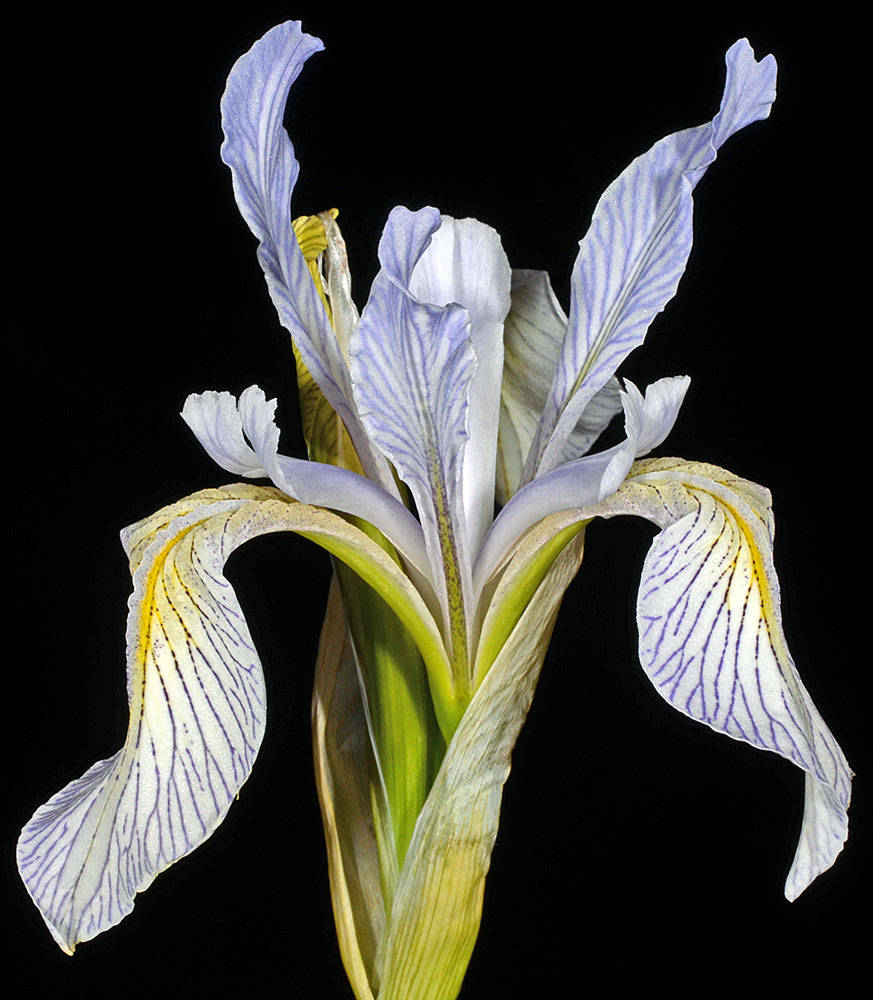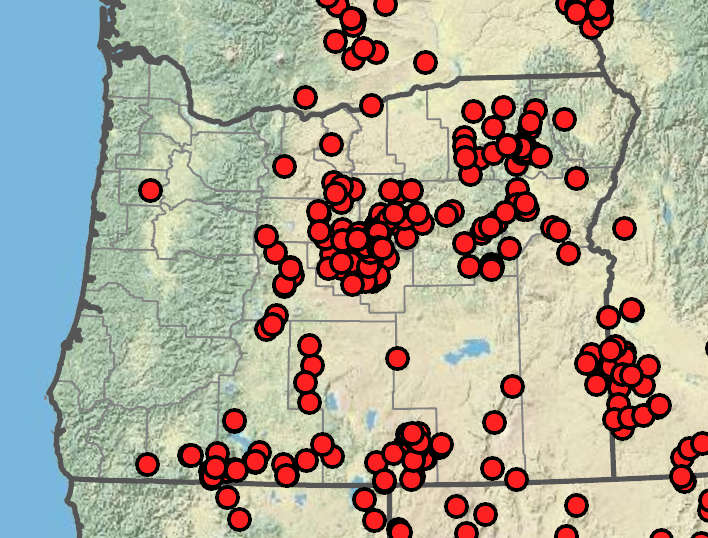Iris missouriensis
Rocky Mountain iris, western blue flag
fleshy;
rhizomes freely branching; stout, covered with old leaf bases.
unbranched or up to 2-branched.
basal leaves light green, usually white basally or sometimes purplish, 3–12 mm wide, glaucous;
cauline leaves similar to basal.
2–3-flowered;
bracts keeled; outer usually shorter than inner.
perianth blue, lavender, or white, veined deeper violet;
sepals deeply veined lilac-purple, with yellow-white signal at base of limb;
claws yellowish white, veined and dotted with purple;
floral tube less than 12 mm;
style tips rounded;
margins irregularly toothed;
stigmas 2-lobed.
round in cross section, with 6 ridges.
globular to pear-shaped, light brown, wrinkled.
=38.
Iris missouriensis
Wet meadows, roadside ditches, margins of streams. Flowering May–Jul. 300–2000 m. BR, BW, Col, ECas, Lava, Owy. CA, ID, NV, WA; north to British Columbia, northeast to MN and southeast to NM, south to Mexico. Native.
The leaves of I. missouriensis are unpalatable to livestock, and the species is considered a noxious weed in pastures. This species is morphologically variable across its large geographic range.
Ann Willyard



